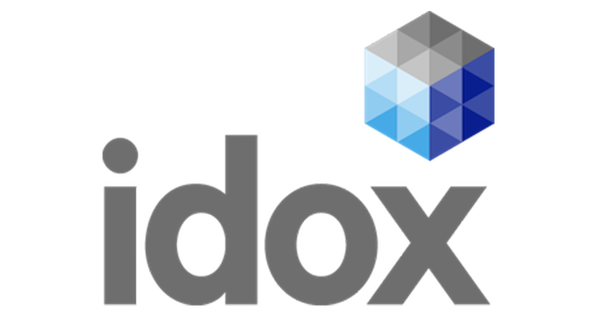How can CAFM help businesses cut costs and increase efficiency?
Business and economic uncertainty have plagued markets and businesses, particularly over the last two years, showing no signs of stabilising in the short term. With inflation at a 40-year high, supply chain disruption due to the war in Ukraine, and ongoing economic turbulence from Brexit and COVID-19, there are mounting pressures on businesses across industries to cut costs and look at efficient ways of working.
The cost of heating, lighting, cooling, maintenance and other expenses makes facilities management one of the most sizeable operating investments for many businesses. Today, facilities managers are accountable for a broad range of tasks. Among many things, they are responsible for creating a better and safer working environment through proper management of all risks, proactive responsibility for maintenance issues, and ensuring building compliance – whilst controlling expenses.
To successfully manage these functions in a streamlined and cost-effective way, facilities managers need the tools to centralise these functions for complete visibility of tasks – this is where Computer Aided Facilities Management (CAFM) plays a vital role. CAFM empowers facilities managers to proactively monitor and manage all maintenance functions, compliance and safety across an estate, away from the inaccuracy and manual nature of spreadsheets.
Here are five ways CAFM can help facility managers unlock cost savings:
1. Asset-related savings with Planned Preventative Maintenance (PPM)
Unexpected asset downtime can drain resources. The failure of an asset or a component may also compromise employee safety or make a business non-compliant with regulations, which could incur substantial fines. Subsequent reputational damage is also a potential factor which could be even more costly in the long term.
PPM enables maintenance tasks to be regularly scheduled ahead of time. The idea is to prevent problems before they occur and allow for better accuracy in budgeting for repair and maintenance works that may be required.
A CAFM system provides the tools and insight for managers to oversee preventative maintenance schedules, identify maintenance costs, and make appropriate asset-related decisions – helping organisations manage costs and minimise the possibility of sudden, expensive repairs. Identifying potential issues before they arise and carrying out a scheduled plan of repairs and servicing also ensures equipment remains operational for longer. CAFM systems notify engineers and administrators where PPM and reactive tasks may overlap – facilitating further time and cost savings through efficient scheduling of jobs. The software can also coordinate maintenance alerts, auto-assign tasks based on insight, generate work schedules and track activity against SLAs – leading to significant asset-related savings in the long run.
A CAFM system provides the tools and insight for managers to oversee preventative maintenance schedules, identify maintenance costs, and make appropriate asset-related decisions – helping organisations manage costs and minimise the possibility of sudden, expensive repairs.
2. Centralised digital dashboard for informed decision-making
With customised web dashboards, CAFM systems provide facilities managers with a 360-degree view of an estate which fuels better decision making, improved monitoring, and feeds into continuous improvements.
With customised web dashboards, CAFM systems provide facilities managers with a 360-degree view of an estate which fuels better decision making, improved monitoring, and feeds into continuous improvements. Having information around equipment status, work order status, asset lifecycle, user activity logs, etc. in one central database prevents duplicate job logging and call-outs, ensures efficiency and allows easier prioritisation of work as per urgency and resources. A central database further enables better tracking and easier reporting that minimises the potential of maintenance being unnecessarily repeated.
As a result of deploying Idox’s CAFM Explorer, Affinity Water has been able to take control of its facilities management, achieving enhanced visibility across its multiple sites. As both planned and reactive maintenance is managed via the system, all maintenance-related tasks are now monitored within one centralised dashboard, enabling the team to keep track of work progress and gain operational efficiency.
3. Optimised space management
With flexible working commonplace, offices across industries are seeing fewer employees than before – more than a third of the UK’s office-based workforce is still working from home, many under a hybrid model. As such, space management has become a priority for organisations looking to repurpose or reduce costly under-utilised space across facilities, helping to reduce overheads.
CAFM can support this function by providing the means for teams to optimise the work environment – making the workplace safer and more manageable for everyone. For instance, by monitoring vacant and occupied areas of the workplace, heating and lighting can be adjusted accordingly, ensuring energy efficiency and therefore reduced costs across an organisation. Through streamlined desk-booking and visitor management capabilities, managers can monitor how the workplace is used. With that insight, a working environment can be created that provides a positive user experience without wasting resources on space not utilised effectively.
4. Tighter project tracking and better contractor management
With such an extensive list of responsibilities, facilities managers operate across a complex environment. This is more challenging with manual processes via disparate systems like spreadsheets, email and shared drives. Not only can time be wasted manually logging, searching and updating multiple systems, but the risk of data inaccuracies is also high.
While real-time status updates in CAFM systems allow jobs to be logged faster – thereby increasing efficiency – benchmarking of performance ensures continuous process improvement.
Jobs are logged quickly via web or mobile devices, resulting in increased responsiveness to customer issues, better visibility, and reduced enquiries. Deploying a web-based self-service CAFM interface also reduces the amount of administration required – freeing up staff to focus on other priority tasks and potentially offering potential wage savings if a smaller team is needed.
Furthermore, with a centralised CAFM system, contractors’ and subcontractors’ details can be checked and verified to ensure no work goes under the radar or is billed unnecessarily. The system facilitates better communication between site and contractor, with pictures, additional information and restricted access times highlighted ahead of the planned work so that engineers are better informed before they even arrive on-site. This leads to faster resolutions and fewer call-outs.
5. Enhanced energy savings
Energy management has become an important component of business strategies worldwide. Half of the industrial companies surveyed in the Deloitte Resources 2020 Study reported incorporating energy management at the corporate strategy level to identify opportunities for decarbonisation, cost reduction, and resilience. And the reward for taking action is more than just a clean conscience and regulatory compliance. Businesses can improve operating profits by as much as 60% by implementing environmental, social, and governance (ESG) strategies.
Deploying a CAFM system provides the ability to monitor and understand buildings and assets like never before – delivering the cost savings and environmental benefits that businesses expect. Office buildings across London, Manchester, Bristol, Leeds and Birmingham are losing £60m in wasted energy every year – which could power over 100,000 homes across the country. By monitoring energy usage across an estate, CAFM software provides a detailed picture of areas where inefficiency can be tackled. It can also help proactively manage assets with routine checks and PPM, ensuring all equipment operates at peak efficiency. The comprehensive reporting capability in CAFM systems allows facility managers to use data for efficient and informed decision-making – resulting in the more productive use of resources.
Want to hear more about how Idox’s CAFM Explorer can support cost reductions and efficiencies in your business? Get in touch.






